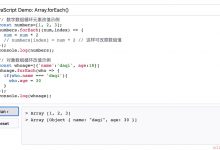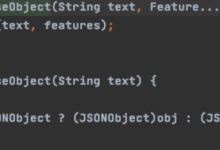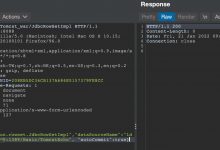前言:语言只是工具,思想才是核心
今天要总结的是 策略模式策略在开发中的应用非常广泛,所以也是非常常见且使用的设计模式。在实际开发中,往往在实现一个功能时,有多种解决方案可行。
常见场景:
- 解压:gzip算法解压,gzip算法解压
- 表单验证:手机号验证,邮箱验证,密码格式验证
- 工资计算:技术猛男工资,鼓励师妹妹工资,冷血产品经理工资
总结策略模式的使用场景,在想实现某个效果时,有多种不同的达成方式。这个时候就要考虑策略模式(如果你写了很多ifelse)
使用策略模式的优点:
- 1.使代码更加清晰可读,减少繁多的if-else
- 2.功能更易拓展,可维护,健壮性【单一指责,抽离变与不变。如果你看了上篇单例设计模式你就看到我也强调过这一点】
- 3.策略可重用
策略模式的应用场景:
场景一:
工资计算
财务妹妹想要给技术猛男、鼓励师妹妹、冷血产品经理来统计他们本月的工资。但他们的工资计算方式不一样呀,这可咋整?
- 技术猛男:(10000基本+1000项目奖励)* 1.2绩效
- 鼓励师妹妹:(9000基本)*1绩效
- 冷血产品经理:(500基本)*1.5绩效
- 【绩效每月都不同】
本着抽离变与不变的思路:
- 变:不同角色不同计算方式
- 不变:都需要计算工资
面对对象思路的写法:
<script>// 策略类 定义各个角色的工资计算方式function WageStrategy() {}WageStrategy.prototype.ROLE = {IT: \'itHandsomeBoy\',ENCOURAGE: \'encourager\',MANAGER: \'productManager\',};WageStrategy.prototype.itHandsomeBoy = function (performance) {return (10000 + 2000) * performance;}WageStrategy.prototype.encourager = function (performance) {return (9000) * performance;}WageStrategy.prototype.productManager = function (performance) {return (500) * performance;}WageStrategy.prototype.getRoleWage = function (role, performance) {return this[role](performance);}// 中间类 (发起计算的财务)【持有策略对象】function FinancialMan(strategy) {this.strategy = strategy;}FinancialMan.prototype.getWage = function (role, performance) {return this.strategy.getRoleWage(role, performance);};// 运行let financialMan = new FinancialMan(new WageStrategy());console.log(financialMan.getWage(financialMan.strategy.ROLE.IT, 1.2));console.log(financialMan.getWage(financialMan.strategy.ROLE.ENCOURAGE, 1));console.log(financialMan.getWage(financialMan.strategy.ROLE.MANAGER, 1.5));</script>
上面是模拟像Java这样基于类的语言,而js中存在很多不一样的特性,例如:函数即对象!所以以下是改进的Js版本的策略模式。
<script>// 策略对象,封装工资算法let wageStrategy = {ROLE : {IT : \'itHansomeBoy\',ENCOURAGE : \'encourager\',MANAGER : \'productManager\',},itHansomeBoy: function (performance) {return (10000 + 2000) * performance;},encourager: function (performance) {return (9000) * performance;},productManager: function (performance) {return (500) * performance;},};// 计算工资对象let getWage= function (role, performance) {return wageStrategy[role](performance);}console.log(getWage(wageStrategy.ROLE.IT, 1.2)); // 14400console.log(getWage(wageStrategy.ROLE.ENCOURAGE, 1)); // 9000console.log(getWage(wageStrategy.ROLE.MANAGER, 1.5)); // 750</script>
场景二:
表单验证(注册账号)用户在填完一堆信息后【如:手机号、邮箱号、姓名、密码、验证码】,点击注册,此时应该先对每个字段进行检查,都通过后才能提交到后台。
比较猛的写法:
let register = function () {let name, phone,if(!name) {return;}else if (!phone || phone.length !== 11) {return;}// do register request}
随着需要检验的字段越来越多,那么else if的逻辑越来越重。并且,如果有个完善信息页面,同样需要用到手机号,邮箱号这些信息检测怎么复用勒?
那么,策略模式来了:
<script>// 表单检验策略类let checkInfoStrategy = {phone: function (phone) {let pass = true;let tips = \'\';if (!phone) {pass = false;tips = \'手机号不能为空\';}return { pass, tips };},email: function (email) {let pass = true;let tips = \'\';if (!email) {pass = false;tips = \'邮箱不能为空\';} else if (email.indexOf(\'@\') < 0) {pass = false;tips = \'邮箱格式不正确\';}return { pass, tips };}}// 中间者 发起表单检验let Checker = function () {this.cache = []; // 存放需要检验项:{策略,待检验字符}// 添加待检查项this.add = function (stragetyItem, beCheckInfo) {this.cache.push({ item: stragetyItem, info: beCheckInfo });return this;};// 开始检查this.startCheck = function () {let result = { pass : true, tips : \'\' };for (let i = 0; i < this.cache.length; i++) {let checkItem = this.cache[i];let {pass, tips} = checkItem.item(checkItem.info);result.pass = pass;result.tips = tips;if (!pass) {break;}}return result;};}// 执行let phone = \'18826274139\';let email = \'\';let checker = new Checker();checker.add(checkInfoStrategy.phone, phone).add(checkInfoStrategy.email, email);let { pass, tips } = checker.startCheck();console.log(\':::\' + pass, tips); // :::false 邮箱格式不正确</script>
其他不多说了,一定要动过。思路就是抽离变与不变。策略类之放不同的算法/逻辑,使用中间类来协助发起策略类的使用。
 爱站程序员基地
爱站程序员基地


